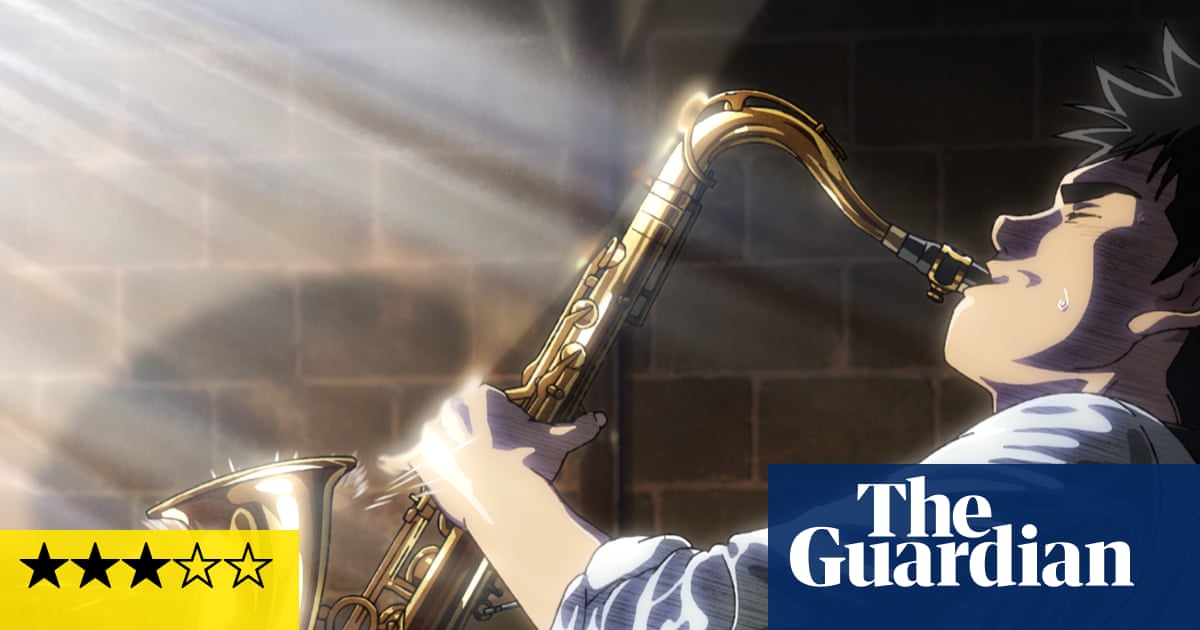
Is jazz dead? Yuzuru Tachikawa’s Blue Giant certainly begs to differ. Following three 18-year-old boys who doggedly pursue their musical dreams, the film hits the familiar beats of the coming-of-age anime, yet it also deviates from the format in interesting ways. There are trials and tribulations, quarrels and reconciliation, but what makes Blue Giant really shine is its masterly rendering of the physical ecstasy that emanates from live performance.
Jass, the band at the film’s centre, represents three different approaches to making music. Arriving in Tokyo from a small town, Dai Miyamoto has only picked up the saxophone four years earlier yet possesses a prodigious, ferocious ability to channel his emotions with every note. In contrast, pianist Yukinori Sawabe, who grew up in a family of musicians, is more restrained: he favours precise technique over improvisations. Percussionist Shunji Tamada, Dai’s childhood friend, is the most inexperienced of all: a complete amateur, his beginner enthusiasm is both endearing and moving.
Spectacularly animated, the live music sequences dynamically shapeshift as if in a trance. The imagery is evocative and electrifying: a solo lights the frame on fire as tongues of flame and electrical currents flow from the instruments. It is a shame, however, that while the film emphasises the characters’ desire to topple old-world hierarchies, the jazz world seen here remains exclusively a boys’ club. Perhaps it’s down to the source manga, but the few female characters remain in the background as external support or inspirations. The sublime score from Hiromi Uehara only makes such imbalance even more glaring; it is ironic that Blue Giant is musically driven by the work of a female composer, yet neglects to make space for women on screen.
Blue Giant is released on 31 January in UK and Irish cinemas.












